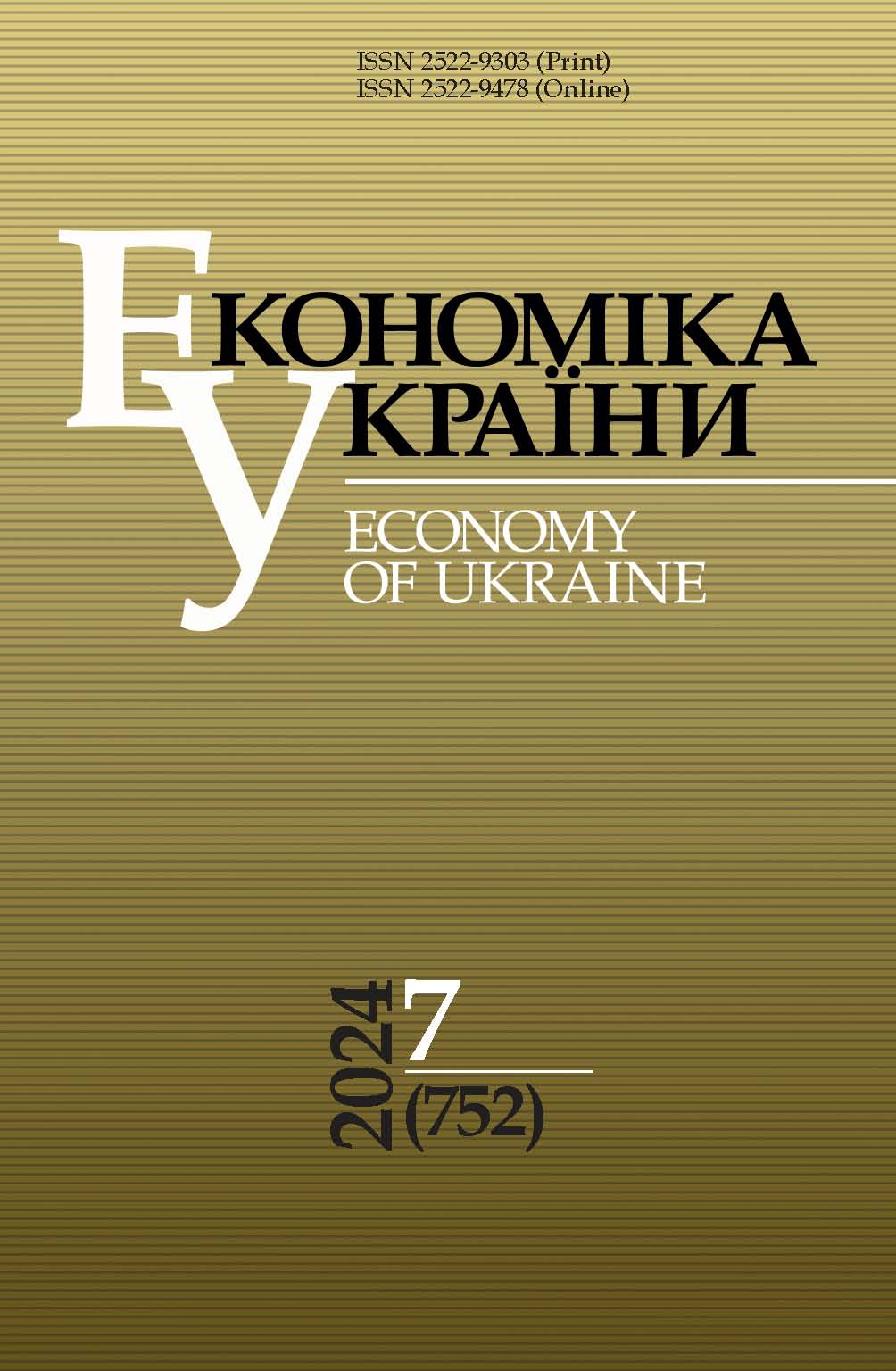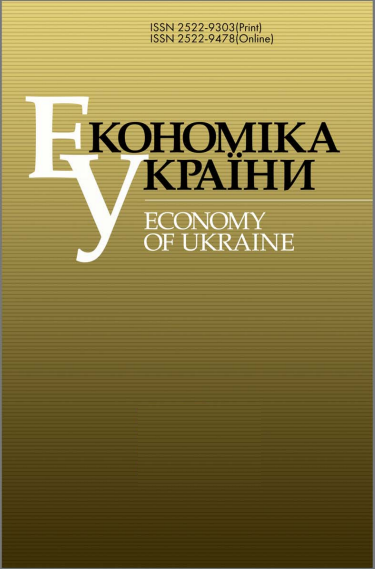BUILDING THE RESILIENCE OF THE SOCIAL AND LABOR SPHERE IN THE CONTEXT OF POSTWAR DEVELOPMENT OF UKRAINIAN ECONOMY
DOI:
https://doi.org/10.15407/economyukr.2024.07.094Keywords:
social and labor sphere; stability; resilience; martial law; postwar development; labor force; social and labor relationsAbstract
The military aggression of the Russian Federation against Ukraine caused large-scale challenges in both the short and long run, as the consequences of the war are the destruction of the demographic and labor resource base of socio-economic development, and the aggravation of the risks of shortages in labor force for the needs of postwar reconstruction. Despite the positive changes in 2023, the state of the labor market will remain unbalanced for a long time, because amid the employment growth, territorial, educational and qualification disparities are deepening, which keeps unemployment at a high level and exacerbates difficulties in finding qualified employees. An urgent task is to determine the possibilities of overcoming or minimizing the impact of these destructive processes.
Using desk analysis methods, the scientific principles of the formation of social and labor sphere stability (resilience) are substantiated, and the priority directions of their introduction into the practice of public administration are determined. In the absence of official statistical data on labor force parameters and labor market, indirect assessment methods are used based on available administrative data, materials of international organizations, results of sociological surveys, etc.
Resilience is interpreted as the ability of the social and labor sphere to prevent, counteract or withstand with less losses in cases where threats and crises are long-lasting and completely insurmountable; at the individual level – as the ability of the labor force to quickly adapt to dynamic changes in the labor market, acquiring new positive qualities. It is proposed to consider the phenomenon of resilience on the basis of interdisciplinary approach using three constructs: risk factors (stressors), protective factors and vulnerability factors, the interaction of which shapes the development trajectory of socio-economic system.
It is concluded that resilience should be understood not simply as an ability, but as action strategy for the acquisition and development of the necessary properties at the individual and institutional levels; the priority directions of ensuring the resilience of the social and labor sphere in the context of the needs of the postwar economic development of Ukraine are outlined.
References
Bassanini, А., Batut, С., Caroli, Е. (2023). Labor Market Concentration and Wages: Incumbents versus New Hires. Labour Economics. Vol. 81. https://doi.org/10.1016/j.labeco.2023.102338
Benmelech, Е., Bergman, К., Kim, H. (2022). Strong Employers and Weak Employees: How Does Employer Concentration Affect Wages? Journal of Human Resources. Vol. 57. P. 200-250. https://doi.org/10.3368/jhr.monopsony.0119-10007R1
Kolot, A., Herasymenko, O. (2020). Labor sphere in the global socio-economic reality 2020: challenges for Ukraine. Kyiv. 32 p. URL: https://ir.kneu.edu.ua/items/adcaacfd-6088-42f8-89bb-379a80129c3f [in Ukrainian].
Kolot, A., Herasymenko, O. (2021). Labor XXI: philosophy of change, challenges, vectors of development. Kyiv. 487 p. [in Ukrainian].
Kolot, A., Herasymenko, O. (2022). Novel formats of labor activity organization: nature, challenges, development trajectories. Economy of Ukraine. 65. 5 (726). 59-76. https://doi.org/10.15407/economyukr.2022.05.059 [in Ukrainian].
Cymbal, O., Libanova, E., Makarova, O. et al. (2021). Human development in Ukraine. Priorities of the national policy of minimizing the asymmetry of Ukrainian labor market. Kyiv. 210 p. URL: https://idss.org.ua/arhiv/Block_Libanova_Ludskij_rozvytok_web.pdf [in Ukrainian].
Antoniuk, V., Pidorycheva, I., Liashenko, V. (2024). Professional and qualification disproportions in the labor market as an obstacle to the structural transformation of Ukraine’s entrepreneurial sector in current and post-war conditions. Economy of Ukraine. 67. 2 (747). 3-31. https://doi.org/10.15407/economyukr.2024.02.003 [in Ukrainian].
Arseyenko, A., Butkalyuk, V., Ivanenko, O. et al. (2023). Employment transformation and the future of labor in the 21st century: global and national sociological dimensions. Kyiv. 181 p. [in Ukrainian].
Heyets, V., Grytsenko, A., Iefymenko, T. et al. (2022). Recovery and reconstruction of Ukraine’s post-war economy. Kyiv. 305 p. URL: http://ief.org.ua/wp-content/uploads/2024/04/Vidnovlennja-ta-reconstrukcsja-povojennoji-economiky.pdf [in Ukrainian].
Pyrozhkov, S., Bozhok, Ye., Khamitov, N. (2021). National resilience of the country: strategy and tactics of anticipation of hybrid threats. Visn. Nac. Acad. Nauk Ukr. 8. 74-82. https://doi.org/10.15407/visn2021.08.074 [in Ukrainian].
Pyrozhkov, S., Mayboroda, O., Khamitov, N. et al. (2022). National resilience of Ukraine: hybrid threats challenge response and prevention strategy. National report. Kyiv, Kuras Institute of Political and Ethnic Studies of the National Academy of Sciences of Ukraine. 552 p. URL: https://ipiend.gov.ua/wp-content/uploads/2022/05/nats_dopovyd.pdf [in Ukrainian].
Reznikova, O. (2022). National resilience in a changing security environment. Kyiv, NISS. 456 p. URL: https://niss.gov.ua/sites/default/files/2022-06/reznikova_book_web.pdf [in Ukrainian].
Kolot, A. (2010). Social and labor sphere: state of relations, new challenges, development trends. Kyiv. 251 p. URL: https://ir.kneu.edu.ua/bitstreams/d413966d-6b63-4e46-8a3b-6506fca914e8/download [in Ukrainian].
Novikova, O., Shamileva, L., Khandii, O. (2023). Assessment of imbalance in the labor sphere under the conditions of martial law and the possibilities to overcome it. Economy of Ukraine. 66. 2 (735). 17-54. https://doi.org/10.15407/economyukr.2023.02.017 [in Ukrainian].
Adamenko, L. (2020). Current approaches to the problem of researching mental resilience. The Bulletin of National Defence University of Ukraine. 5 (58). 5-13. URL: http://visnyk.nuou.org.ua/article/view/224471/224687 [in Ukrainian].
Lisovsky, V. (2020). Resilience development as strengthening Ukrainian national security in the conditions of globalization challenges. Visnyk of the Lviv University Philosophical Political studies. Vol. 32. P. 120-127. https://doi.org/10.30970/PPS.2020.32.16 [in Ukrainian].
Pyrozhkov, S. (2022). National stability of Ukraine: security strategy. Ukrainian Geographic Journal. No. 2. P. 3-10. https://doi.org/10.15407/ugz2022.02.003 [in Ukrainian].
Cherevatskyi, D. (2023). The resilience of economics and the economics of resilience. Economy of Industry. No. 1 (101). P. 31-39. http://doi.org/10.15407/econindustry2023.01.031 [in Ukrainian].
Bolton, K. (2013). The development and validation of the resilience protective factors inventory: a confirmatory factor analysis. University of Texas at Arlington. 118 p. URL: https://mavmatrix.uta.edu/socialwork_dissertations/120/
Novikova, O., Zaloznova, Yu., Amosha, O. et al. (2022). Transformation of the social and labor sphere under digitalization of economy. Kyiv. 385 p. URL: https://iie.org.ua/wp-content/uploads/application/pdf/da_mono_2022-pdf-na-sajt_compressed.pdf [in Ukrainian].
Smith-Osborne, A. (2007). Life span and resiliency theory: A critical review. Advances in Social Work. Vol. 8. No. 1. P. 162-178. https://doi.org/10.18060/138
Lazos, G. (2019). Theoretical and methodological model of resilience as a basis for developing resilience development psychotechnology. Organizational psychology. Economic psychology. No. 2-3 (17). P. 77-89. https://doi.org/10.31108/2.2019.3.17.9 [in Ukrainian].
Fletcher, D., Sarkar, M. (2013). Review of Psychological Resilience. European Psychologist. Vol. 18. Iss. 1. P. 12-23. https://doi.org/10.1027/1016-9040/a000124
Belinskaya, M., Korolchuk, O. (2018). The role of national resilience in the formation of effective public administration. Yearbook of "Administration and Management" Department. Vol. 3. P. 24-45. URL: https://administracija-i-upravlenie.nbu.bg/download/2-rolj-nacionalnoi.pdf [in Russian].
Downloads
Published
How to Cite
Issue
Section
License
Copyright (c) 2024 Publisher PH "Academperiodyka" of the NAS of Ukraine

This work is licensed under a Creative Commons Attribution-NonCommercial-NoDerivatives 4.0 International License.



